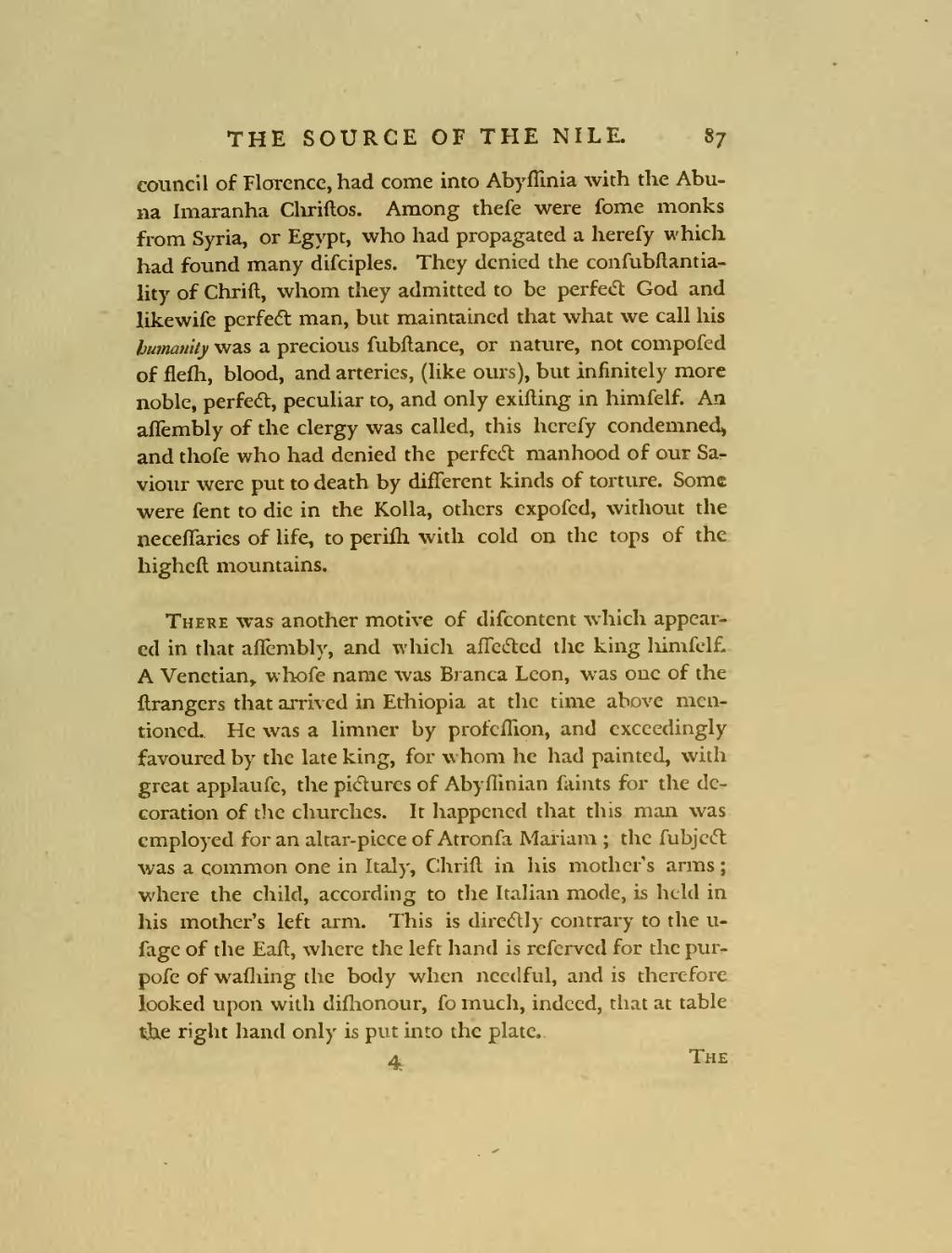council of Florence, had come into Abyssinia with the Abuna Imaranha Christos. Among these were some monks from Syria, or Egypt, who had propagated a heresy which had found many disciples. They denied the consubstantiality of Christ, whom they admitted to be perfect God and likewise perfect man, but maintained that what we call his humanity was a precious substance, or nature, not composed of flesh, blood, and arteries, (like ours), but infinitely more noble, perfect, peculiar to, and only existing in himself. An assembly of the clergy was called, this heresy condemned, and those who had denied the perfect manhood of our Saviour were put to death by different kinds of torture. Some were sent to die in the Kolla, others exposed, without the necessaries of life, to perish with cold on the tops of the highest mountains.
There was another motive of discontent which appeared in that assembly, and which affected the king himself. A Venetian, whose name was Branca Leon, was one of the strangers that arrived in Ethiopia at the time above mentioned. He was a limner by profession, and exceedingly favoured by the late king, for whom he had painted, with great applause, the pictures of Abyssinian saints for the decoration of the churches. It happened that this man was employed for an altar-piece of Atronsa Mariam; the subject was a common one in Italy, Christ in his mother's arms; where the child, according to the Italian mode, is held in his mother's left arm. This is directly contrary to the usage of the East, where the left hand is reserved for the purpose of washing the body when needful, and is therefore looked upon with dishonour, so much, indeed, that at table the right hand only is put into the plate.
